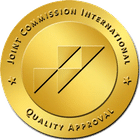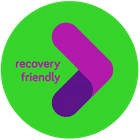Workplace stigmas are easy to start and difficult to stop. GateHouse Treatment initially published a blog entitled Stigma in the Workplace earlier last year, wherein we detailed how overcoming the negative connotations of addiction at work can be an uphill battle. In addition to defining substance abuse as a mental health issue and exploring the economic damage of addiction in America, we focused the conversation on three parts: Exiting the workplace, navigating the workplace, and re-entering it.
As we return to the subject, we aim to reach any supervisors, managers, or employers who have questions about best practices or are looking for guidance on how to address (and even help) someone demonstrating the tendencies of a Substance Use Disorder (SUD). Experience shows us the key to eliminating workplace stigmas is understanding.
1. Understanding that Addiction Does Not Discriminate
According to the Centers for Disease Control (CDC) reports, 1 in 7 Americans has reported personal experiences with a Substance Use Disorder. They may have turned to whichever drug to cope with trauma, stress, or mental health issues, but many were initially introduced via prescription by a doctor. Regardless of the origin, the challenge impacts every demographic and regularly demonstrates that using drugs over time can create a direct path toward becoming harmfully dependent.
2. Understanding that Addiction Is Treatable
Those without experience with an SUD might dismiss the problem as a character flaw or lack of willpower, which is exactly how a workplace stigma starts. However, addiction is not a character flaw; it is a disease. And overcoming the disease is not as simple as resisting the urge to take drugs.
Those who suffer from an SUD understand that their actions are potentially harmful to themselves, their family, and their livelihood. Knowing the potential harm in no way makes controlling drug use any easier. However, while recovery is challenging, it has been proven possible repeatedly, regardless of the workplace stigmas that persist.
3. Understanding that a Relapse is Not a Failure
Relapses can happen soon after a substance user has started trying to manage their recovery or even after years of abstaining from a substance. A relapse is not somehow the indicator of a moral failing or lack of willpower, regardless of the workplace stigma associated. If anything, it can signify that additional or different treatment methods are required. It is less about what went wrong and more about what could prove more effective.
4. Understanding the Cost of Stigmatization
According to a study released by Johns Hopkins Medicine post-COVID, the United States has experienced what they categorize as a “devastating rise” in drug overdose deaths. Between 1999 and 2020, more than 800,000 Americans died from drug overdoses. In addition, escalating drug addiction rates have contributed to recent decreases in U.S. life expectancy. While there can be various causes of an overdose (such as an attempt to avoid the pains associated with becoming “Dope Sick,” for example), challenges facing those living with workplace stigma can be a potential contributing factor.
5. Understanding Where Stigmas Exist
Why is it essential to get to the core of workplace stigmas? Because the stigma surrounding SUDs is deeply entrenched and can pose a significant barrier to those employees who seek open conversations and help. Such stigma can be structural, social, or self-inflicted. These three forms of stigma can overlap and reinforce one another, and their impact on people within the stigmatized group can be devastating.
1. Structural Stigma can reside in punitive or discriminatory policies, practices, or laws that negatively affect the stigmatized group. When reviewed by those not part of the group in question, they can be more challenging to perceive and often require education and empathy before any lasting changes are recognized.
2. Social Stigma involves negative stereotypes about members (or perceived members) of a group that are determined to have socially undesirable characteristics. A social stigma is an overt attempt to distance or exclude such groups based on generalizations, misunderstandings, or partial truths. The result can be a socially debilitating label or identity. In the case of SUDs, an example of social stigma is when someone with or in recovery from substance use gets labeled as an “addict” or “alcoholic” and subsequently perceived as lacking in willpower or character, possibly going so far as to consider them deceitful, dangerous, or generally untrustworthy. Such common misconceptions can stigmatize even those taking medication for opioid use disorder as requiring a “crutch” or having just replaced one addiction with another. Perpetuating the belief that proper recovery can only occur without medications helps neither the employee nor the employer.
3. Self-stigma occurs when those who are part of a stigmatized group begin to believe negative stereotypes about themselves. Among those with SUDs, self-stigma can lead to shame, fear of asking for help, and the resignation that the barriers to recovery are too significant to overcome.
Surprisingly, employers can impact all three categories with just a few straightforward cultural adjustments.
6. Understanding How an Employer Can Help
The corporate culture can contribute to either success or failure in rehabilitation. Similarly, workplace stigmas and misunderstandings can undermine many efforts sought by executives or managers to become a recovery-ready culture. The following are essential steps currently recommended by the Department of Labor to address the issue of addiction stigma by an employer.
· Education: Most reflexive responses are from a lack of experience or exposure to facts. Every position in your company, from leadership to management to staff, can benefit from learning more about substance abuse, the workplace stigmas your organization wants to avoid, the language used around the subject, and the impact felt by co-workers.
· Communication: Take a critical look at the terminology used in your company’s documents. How is the subject of substance use framed? When reviewing your policies, what terms does your culture use when describing disorders, treatments, and recovery? As with any illness, no person equals the sum of their health conditions. However, the effect of stigmatizing terminology can have a subliminal impact on those whose judgments and perceptions will be influenced by the language of your organization. Using terms such as “clean” or “abuse” about something as simple as a drug screening result can impact how people with substance use disorder are treated or made to feel. Organizations can reduce workplace stigmas and build a healthier, more welcoming culture by adopting neutral, science-based language and person-first framings. Replace “addict” with “person with a substance use disorder,” for example, and watch how the conversation changes.
· Demonstration: One of the most effective strategies in stigma reduction is the introduction of members of a stigmatized group. GateHouse Treatment offers an Alumni Program for this very reason. Those who have navigated recovery (always a work in progress) can help shed light on misperceptions, myths, and fears associated with such stigmas. In the workplace, recovering employees can be invaluable in convincing others to seek help without feeling judged. Granted, these employees should only speak openly about their recovery if they are comfortable doing so, but you can also partner with the local recovery community for volunteers.
GateHouse Treatment Wants to Help You Overcome Workplace Stigmas
With the right help and support, addiction recovery is possible and commonplace. That said, workplace stigmas can contribute to such negative feelings as being overwhelmed or living without reasonable solutions. If you want to further educate your company’s leadership, management, and staff on substance use, the stigmas, the language that helps, and its impact, you’ll find more information on this topic here.
GateHouse Treatment recognizes that conquering addiction requires much more than willpower and self-reliance. The level of support someone with an SUD can find at home, within the community, and even in the workplace directly impacts the success of recovery. If you or someone close is struggling, we can help.
Here at GateHouse Treatment, we provide the tools to create a meaningful client recovery process that supports your goals and puts you first. Our process includes proven methodologies and comprehensive therapy. For more information about our treatment approach, contact us at (855) 448-3588 or here. No matter the workplace environment or your peers’ support, there is always time to seek help.
- Exploring 6 Long-Term Effects of Medication-assisted Treatment - January 10, 2024
- Observing National Codependency Awareness Month This January - December 18, 2023
- The Dangers of Adderall: Who’s at Risk and 2 Healthy Alternatives - May 3, 2023




